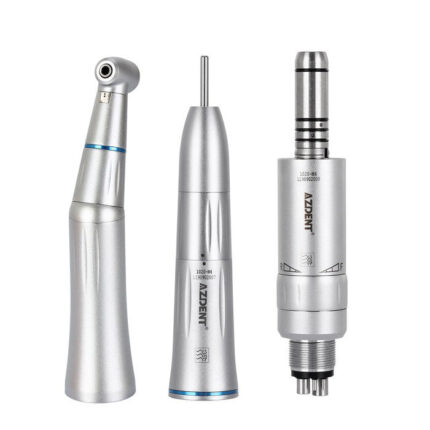The Essential Guide to Endo Handpieces in Modern Dentistry

The Essential Guide to Endo Handpieces in Modern Dentistry
Endodontics is a critical field of dentistry focused on the diagnosis, prevention, and treatment of dental pulp and surrounding tissues. A key component of achieving success in endodontic procedures is the endo handpiece. This specialized tool has revolutionized root canal treatments, providing precision, comfort, and efficiency. For more information on the latest models and technology, check out this endo handpiece https://dentaprof.com/collection/handpieces/endo-handpieces/. In this article, we will delve into the components of endo handpieces, their working mechanism, different types available, care and maintenance, and the latest trends in technology.
Understanding Endo Handpieces
Endo handpieces are precision instruments designed specifically for root canal treatment. They are used to rotate files and other tools within the root canal system in order to clean and shape it effectively. The endodontist’s ability to perform a successful treatment often hinges on having the right tools, particularly a high-quality endo handpiece that ensures consistent performance and reliability.
Components of Endo Handpieces
An endo handpiece consists of several critical components that work together to facilitate endodontic procedures:
- Chassis: The main body of the handpiece houses all internal components. It is designed to be lightweight for ease of use.
- Motor: Provides the necessary power to rotate the instruments at variable speeds. Advances in motor technology have led to more efficient and quieter operations.
- Working Channel: The internal pathway through which files and other instruments are inserted and manipulated within the root canal.
- Control System: Allows for variable speed, torque settings, and sometimes even includes feedback mechanisms to alert the dentist if too much force is being applied.

The Working Mechanism
The working principle of an endo handpiece is fairly straightforward. Once the handpiece is attached to the power source, the motor engages, allowing the files to rotate efficiently. The dentist or endodontist controls the speed and torque, depending on the procedure and the condition of the tooth. Using an appropriate endo handpiece ensures that the files move smoothly within the canal walls, which minimizes the risk of perforations and improves cleaning.
Types of Endo Handpieces
There are two primary types of endo handpieces:
- Electric Endo Handpieces: These handpieces use a motor to drive the rotation of files. They offer precise control over speed and torque, significantly improving efficiency and reducing file fatigue. Most modern endodontists prefer electric handpieces due to their superior performance.
- Pneumatic Endo Handpieces: These operate using air pressure to activate the movement of files within the canal. While they are effective, they may lack the control and precision offered by electric models.
Benefits of Electric Endo Handpieces
Electric endo handpieces provide a myriad of benefits that enhance the endodontic treatment experience:
- Torque Control: Advanced models allow for the adjustment of torque levels, ensuring that files operate within their safe limits.
- Constant Speed: Unlike pneumatic models, electric handpieces maintain a consistent speed throughout the procedure, which enhances outcomes.
- Less Vibration: They operate with less vibration, leading to better control and reduced patient discomfort.
- Integrated Apex Locators: Many electric models come with built-in apex locators, helping practitioners determine the precise length of the root canal.

Care and Maintenance of Endo Handpieces
To ensure the longevity and functionality of endo handpieces, proper care and maintenance are essential. Here are some best practices:
- Cleaning: Handpieces should be cleaned after each use to remove debris and prevent cross-contamination.
- Lubrication: Regular lubrication is essential for electric handpieces to maintain optimal performance and extend their lifespan.
- Testing: Periodic testing of motor function and torque control can prevent malfunctions during procedures.
- Routine Servicing: Schedule routine servicing with a professional to ensure all parts are functioning correctly and to identify any potential issues.
The Future of Endo Handpieces: Innovations and Trends
The landscape of dentistry is rapidly changing, and with it, the technology surrounding endo handpieces. Future innovations may include:
- Smart Technology: The integration of IoT devices could allow for real-time monitoring of handpiece performance, providing data-driven insights to practitioners.
- Improved Materials: Advancements in materials science may yield lighter, more durable handpieces that offer superior ergonomics and functionality.
- Enhanced Ergonomics: Future designs may focus even more on user comfort, including customizable grips and balanced weights.
Conclusion
In summary, endo handpieces play an indispensable role in the practice of modern dentistry. The choice between electric and pneumatic models, as well as an understanding of their components and maintenance needs, is vital for optimal performance. As technology continues to advance, we can expect even more innovations that will enhance the capabilities of endo handpieces, ultimately improving patient outcomes and making the dental experience more comfortable. By investing in quality handpieces and employing best practices for their use, dental professionals can deliver exceptional care in the field of endodontics.


